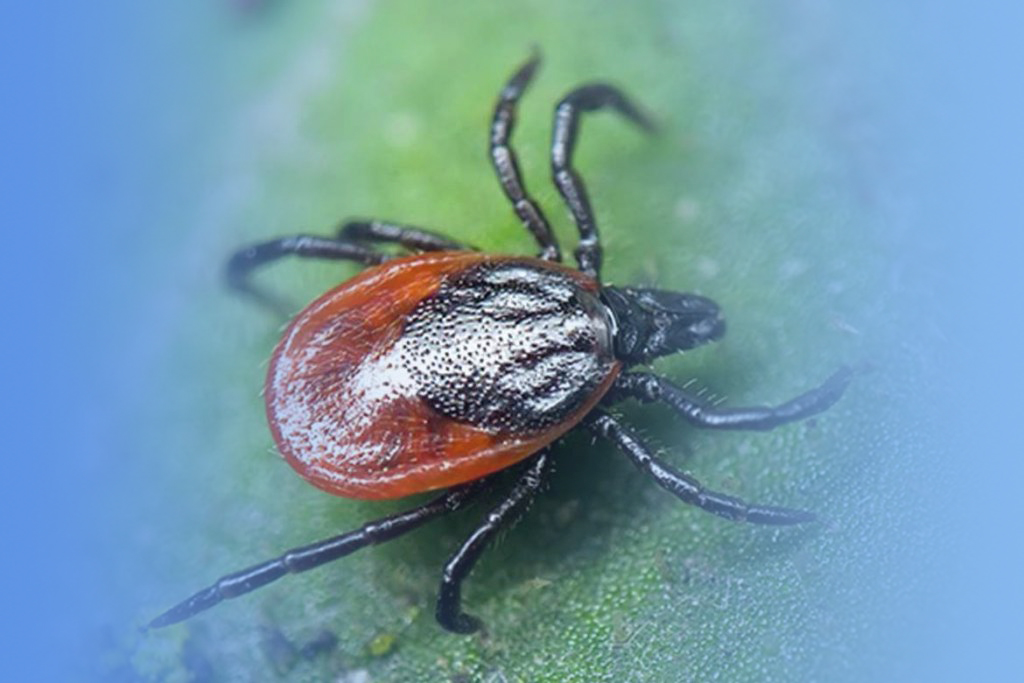[1] Andersen LK, Davis MDP. Climate change and the epidemiology of selected tick-borne and mosquito-borne diseases:Update from the International Society of Dermatology Climate Change Task Force[J]. Int J Dermatol,2017,56(3):252-259. DOI:10.1111/ijd.13438.
[2] Wilder-Smith A, Ooi EE, Horstick O,et al. Dengue[J]. Lancet,2019,393(10169):350-363. DOI:10.1016/S0140-6736(18)32560-1.
[3] World Health Organization. World malaria report 2022[EB/OL]. (2022-12-08)[2023-10-12]. https://www.who.int/publications/i/item/9789240064898.
[4] Yuan YC, Wu ZY, Li QB,et al. Distribution of Anopheles anthropophilus in Anhui Province and its role in spreading malaria and filariasis[J]. Chin J Parasit Dis Control,1991,4(1):58-60. (in Chinese)袁业春,吴振友,李钦白,等. 安徽省嗜人按蚊分布及传播疟疾、丝虫病的作用[J]. 中国寄生虫病防治杂志,1991,4(1):58-60.
[5] Anhui Province successfully passed the final assessment of the national elimination of malaria[J]. J Trop Dis Parasitol,2019,17(4):246. (in Chinese)安徽省顺利通过国家消除疟疾终审评估[J]. 热带病与寄生虫学,2019,17(4):246.
[6] Zhang T, Xu X, Jiang JJ,et al. Epidemiological characteristics of imported malaria and influencing factors of severe cases in Anhui Province[J]. Chin J Schist Control,2017,29(6):704-709. DOI:10.16250/j.32.1374.2017082.(in Chinese)张滔,许娴,姜静静,等. 安徽省输入性疟疾疫情流行特征及重症病例影响因素分析[J]. 中国血吸虫病防治杂志,2017,29(6):704-709. DOI:10.16250/j.32.1374.2017082.
[7] Jiang JJ, Zhang T, Xu X,et al. Surveillance of malaria vectors in Anhui Province from 2016 to 2018[J]. Chin J Schist Control,2020,32(4):389-392,396. DOI:10.16250/j.32.1374.2020040.(in Chinese)姜静静,张滔,许娴,等. 2016—2018年安徽省传疟媒介监测[J]. 中国血吸虫病防治杂志,2020,32(4):389-392,396. DOI:10.16250/j.32.1374.2020040.
[8] Tan WZ, Zhang CJ, Liu X,et al. Research on the compilation of the Atlas of the First National Geographic Census of Anhui Province[J]. Intellig City,2020,6(10):52-53. DOI:10.19301/j.cnki.zncs.2020.10.025.(in Chinese)谈五洲,张春菊,刘旭,等. 《安徽省第一次全国地理国情普查成果图集》编制研究[J]. 智能城市,2020,6(10):52-53. DOI:10.19301/j.cnki.zncs.2020.10.025.
[9] Zou Z, Lu HX, Shen YZ,et al. Study on epidemic and control of Plasmodium falciparum malaria in Anhui[J]. Chin J Dis Control Prev,2000,4(4):307-309. DOI:10.3969/j.issn.1674-3679. 2000. 04. 006.(in Chinese)邹铮,陆厚祥,沈毓祖,等. 安徽省恶性疟流行与防治的研究[J]. 疾病控制杂志,2000,4(4):307-309. DOI:10.3969/j.issn.1674-3679.2000.04.006.
[10] Shen YZ, Zou Z, Lu HX,et al. Prevention and control measures and effectiveness evaluation of Plasmodium falciparum malaria in Anhui Province[J]. Anhui J Prev Med,1998,4(2):193-195. (in Chinese)沈毓祖,邹铮,陆厚祥,等. 安徽省恶性疟防治措施及效果评价[J]. 安徽预防医学杂志,1998,4(2):193-195.
[11] Xu FN, Jia SC, Shen YZ. Malaria situation in Anhui Province in 2001[J]. Anhui J Prev Med,2002,8(6):321-322. (in Chinese)徐伏牛,贾尚春,沈毓祖. 2001年安徽省疟疾形势[J]. 安徽预防医学杂志,2002,8(6):321-322.
[12] Fu WB, Yan ZT, Guo J,et al. Research progress of the genus Anopheles of mosquitoes in China[J]. Chin J Vector Biol Control,2021,32(5):519-525. DOI:10.11853/j.issn. 1003. 8280. 2021. 05.003.(in Chinese)付文博,闫振天,郭静,等. 中国按蚊属蚊虫研究进展[J]. 中国媒介生物学及控制杂志,2021,32(5):519-525. DOI:10.11853/j.issn.1003.8280.2021.05.003.
[13] Xu X, Zhang T, Jiang JJ,et al. Course of malaria control and elimination in Anhui Province[J]. J Trop Dis Parasitol,2020,18(2):65-69,80. DOI:10.3969/j.issn.1672-2302.2020.02.001.(in Chinese)许娴,张滔,姜静静,等. 安徽省疟疾控制和消除历程[J]. 热带病与寄生虫学,2020,18(2):65-69,80. DOI:10.3969/j.issn.1672-2302.2020.02.001.
[14] Ma AM, Wang JF, Wang DQ,et al. Prediction of potential distribution of Anopheles sinensis in China based on MaxEnt[J]. Chin J Vector Biol Control,2014,25(5):393-398. DOI:10. 11853/j.issn.1003.4692.2014.05.003.(in Chinese)马爱民,王劲峰,王多全,等. 基于最大熵模型的中华按蚊潜在分布预测[J]. 中国媒介生物学及控制杂志,2014,25(5):393-398. DOI:10.11853/j.issn.1003.4692.2014.05.003.
[15] Li YC, Zhang SY. Research on development of circular economy of animal husbandry in Anhui Province[J]. J Anhui Agric Sci,2011,39(15):9314-9316. DOI:10.3969/j.issn.0517-6611.2011.15.179.(in Chinese)李宜超,张士云. 安徽省畜牧业循环经济的发展对策思考:基于安徽省牲畜养殖户的调研[J]. J安徽农业科学,2011,39(15):9314-9316. DOI:10.3969/j.issn.0517-6611. 2011. 15.179.
[16] Habtewold T, Prior A, Torr SJ,et al. Could insecticide-treated cattle reduce Afrotropical malaria transmission? Effects of deltamethrin-treated Zebu on Anopheles arabiensis behaviour and survival in Ethiopia[J]. Med Vet Entomol,2004,18(4):408-417. DOI:10.1111/j.0269-283X.2004.00525.x.
[17] Wu KC, Chen WJ, Wang ZG,et al. Studies on distribution and behavior of Anopheles minimus and its role of malaria transmission in Hainan Province at present[J]. Chin J Parasitol Parasit Dis,1993,11(2):120-123. (in Chinese)吴开琛,陈文江,王志光,等. 海南省当前微小按蚊的分布特征、生态习性和传疟作用的研究[J]. 中国寄生虫学与寄生虫病杂志,1993,11(2):120-123.
[18] Zhong BX, He TR, Zhang Z,et al. Spatial-temporal pattern evolution of cultivated land area and its driving forces of agricultural areas in Huaibei plain[J]. J Southern Agric,2017,48(1):174-180. DOI:10.3969/j:issn.2095-1191.2017.01.174.(in Chinese)钟博星,何太蓉,张喆,等. 淮北平原农业区耕地面积时空格局演变与驱动力分析[J]. 南方农业学报,2017,48(1):174-180. DOI:10.3969/j:issn.2095-1191.2017.01.174.
[19] Lu BL. Fauna Sinica Insecta,Vol 9,Diptera:Culicidae Ⅱ[M]. Beijing:Science Press,1997:33. (in Chinese)陆宝麟. 中国动物志. 昆虫纲. 第九卷. 双翅目蚊科(下)[M]. 北京:科学出版社,1997:33.
[20] Anhui Provincial Emergency Management Department. Overview of comprehensive assessment of flood disaster losses in Anhui Province in 2020[EB/OL]. (2020-10-20) [2023-10-12]. https://yjt.ah.gov.cn/public/9377745/145229191.html.(in Chinese)安徽省应急管理厅. 2020年全省洪涝灾害损失综合评估概况[EB/OL]. (2020-10-20)[2023-10-21]. https://yjt.ah.gov.cn/public/9377745/145229191.html.
[21] Li YY, Fang Y, Xue JB,et al. Surveillance of malaria vectors:18 sites,12 PLADs,China,2018-2020[J]. China CDC Wkly,2021,3(35):741-745. DOI:10.46234/ccdcw2021.183.
[22] Feng XY, Feng J, Zhang L,et al. Vector control in China,from malaria endemic to elimination and challenges ahead[J]. Infect Dis Poverty,2022,11(1):54. DOI:10.1186/S40249-022-00971-3.
[23] Zhang T, Wang DQ, Qian YJ,et al. Profile and determinants of delayed care-seeking and diagnosis among patients with imported malaria:A retrospective study in China,2014-2021[J]. Infect Dis Poverty,2022,11(1):125. DOI:10.1186/s40249-022-01050-3.
[24] Wu HX, Liu XB, Liu QY. Current status and problem of vector prevention and control in China[J]. Cap J Pub Health,2018,12(1):4-6. DOI:10.16760/j.cnki.sdggws.2018.01.002.(in Chinese)吴海霞,刘小波,刘起勇. 我国病媒生物防控现状及面临的问题[J]. 首都公共卫生,2018,12(1):4-6. DOI:10.16760/j.cnki.sdggws.2018.01.002. |



